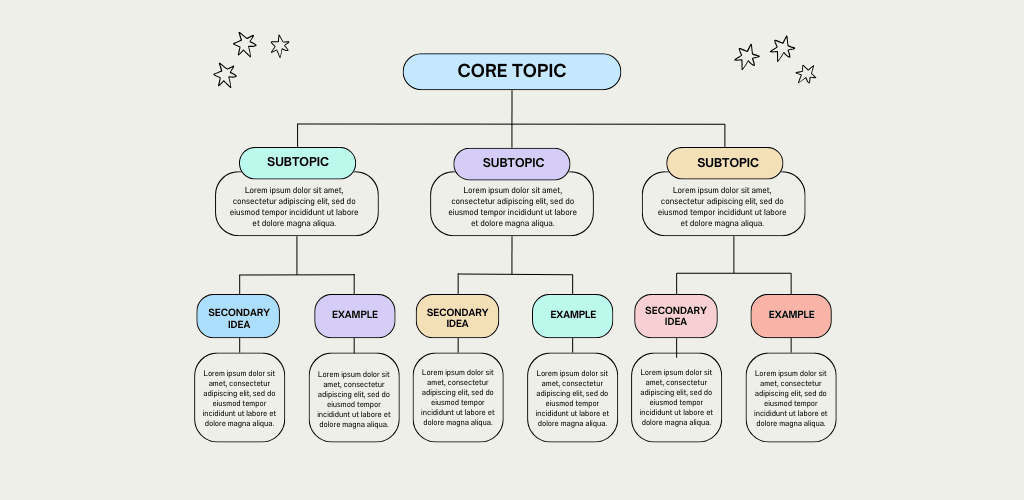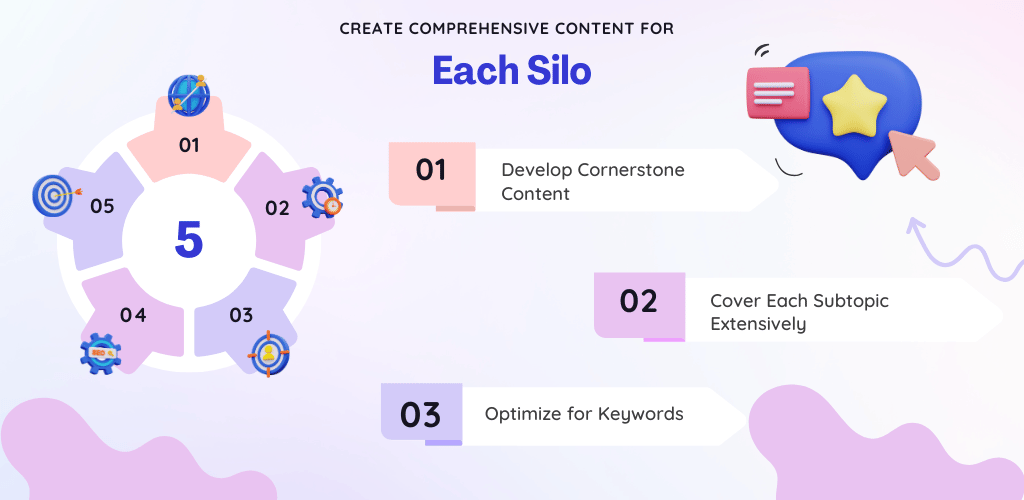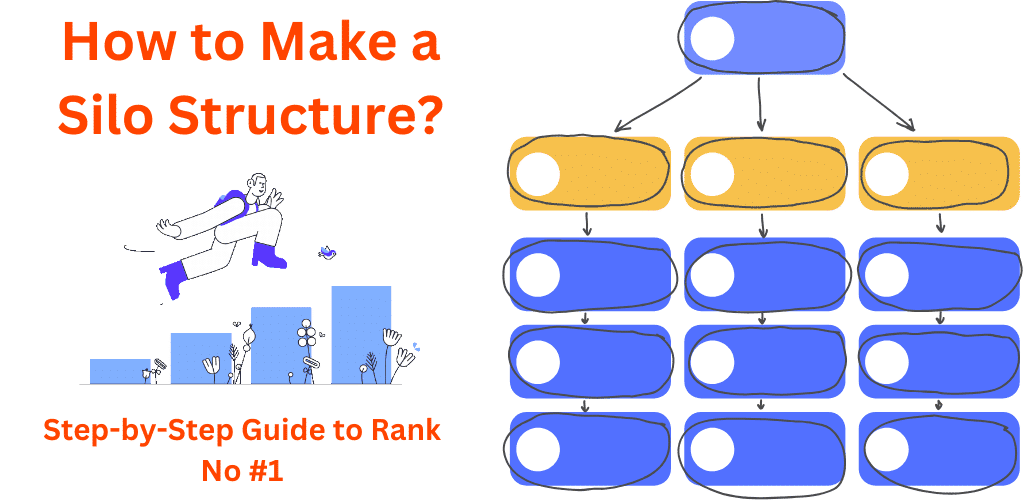Table of Contents
Introduction
When aiming for SEO success, implementing a silo structure on your website is essential. This well-organized content architecture enables you to group related topics effectively, helping search engines understand your site’s purpose and boosting its authority in search rankings. In this guide, we will take you through a step-by-step approach to create an effective silo structure, driving your content to the top of search results.
What is a Silo Structure?
A silo structure is a website organizational method where content is grouped based on closely related topics. This method breaks down your website into primary themes or “silos,” each focused on a central topic, with relevant subtopics branching underneath. Each silo aims to present a comprehensive view on a topic, signaling to search engines that your website is an authority on specific subjects.
Why is Silo Structure Important for SEO?
A well-constructed silo structure:
- Enhances Website Authority: Organized content makes it easier for search engines to understand your site’s main topics, positioning it as an authority.
- Improves User Experience: Visitors navigate your site smoothly, finding relevant information within each silo.
- Boosts Internal Linking: Silos enable natural internal links between related content, passing authority across the site and enhancing ranking potential
How to Create an Effective Silo Structure – Step-by-Step
1. Define Your Core Topics

Start by identifying your website’s main topics. These should be broad, high-level categories relevant to your niche and target audience. For instance, if your website focuses on digital marketing, your core topics might include SEO, Content Marketing, Social Media Marketing, and Email Marketing.
- Identify Audience Needs: Use tools like Google Trends or Answer the Public to discover what users are searching for within your niche.
- Research Keywords: Focus on high-volume keywords that define each topic, forming the foundation of each silo.
2. Organize Subtopics Under Each Core Topic

Each core topic will have subtopics. Subtopics provide in-depth information on specific aspects of the main topic. For instance, if SEO is your core topic, subtopics might include On-Page SEO, Off-Page SEO, Technical SEO, and Keyword Research.
- Create a Keyword Cluster: Use keyword research tools to group related keywords for each subtopic, creating clusters that build a content-rich structure within each silo.
- Focus on User Intent: Structure subtopics around what users typically search for, ensuring your content aligns with their search intent.
3. Design a Clear URL Structure

A logical URL structure helps reinforce the silo structure and signals relevance to search engines. Ensure that each URL reflects the hierarchy of the topics.
- Use a Hierarchical Structure: Start with the main topic, followed by subtopics (e.g., website.com/seo/on-page-seo).
- Include Keywords in URLs: Make each URL concise, descriptive, and keyword-rich to provide clarity and improve SEO ranking.
4. Create Comprehensive Content for Each Silo

Quality content is the foundation of an effective silo. Each page should be comprehensive, addressing the subtopic’s depth with well-researched information.
- Develop Cornerstone Content: For each core topic, create a foundational article that provides an overview of the topic, linking to each subtopic within the silo.
- Cover Each Subtopic Extensively: Create detailed articles for each subtopic, ensuring they address all aspects of the keyword cluster.
- Optimize for Keywords: Ensure each article targets relevant primary and secondary keywords, enhancing its SEO potential.
5. Implement Strategic Internal Linking

Strategic internal linking strengthens the relationship between content in each silo. Internal links help search engines understand content relevance and distribute authority across related pages.
- Link Between Related Pages: Within each silo, link related subtopics and cornerstone content. Avoid linking outside the silo unless it’s highly relevant.
- Use Descriptive Anchor Text: When linking, use keywords as anchor text to reinforce the topic hierarchy.
6. Develop a Strong Navigation Menu

Your website’s navigation menu should reflect the silo structure, making it intuitive for users to explore your content.
- Main Topics in Navigation: Include each core topic in the main navigation bar for visibility.
- Subtopics in Dropdown Menus: Use dropdown menus to feature subtopics, allowing users to easily navigate through each silo.
7. Use Category Pages for Enhanced User Experience

Create category pages for each core topic, summarizing the content available within the silo and providing links to subtopics.
- Organize Content on Category Pages: Present cornerstone content and subtopic links logically on each category page.
- Optimize for Search Engines: Use category pages to reinforce keywords associated with the main topic, adding meta descriptions and keyword-focused headers.
8. Maintain a Consistent Content Flow

Regularly updating your silos with fresh content signals to search engines that your site is active and authoritative.
- Plan Content Updates: Keep adding new articles that fit into existing silos, such as emerging trends or updated techniques.
- Repurpose Content: Convert high-performing content into other formats, like videos or infographics, to increase user engagement.
9. Monitor and Adjust for Performance

Track your silo structure’s performance using analytics tools like Google Analytics and Google Search Console. Monitoring allows you to see which silos and pages perform best, identify areas for improvement, and make adjustments accordingly.
- Track Keyword Rankings: Observe the ranking progress of primary keywords within each silo.
- Analyze User Behavior: See how users interact with content across silos, identifying drop-offs or popular pages to guide updates.
- Optimize Underperforming Pages: Update pages within silos to reflect trending keywords or current user interests.
Benefits of a Silo Structure for Long-Term SEO
Building and maintaining a silo structure offers significant SEO benefits:
- Improved Crawlability: Search engines can crawl and index your site more efficiently, quickly understanding the relevance of each page.
- Increased Topical Authority: Organized silos build authority on specific topics, helping your site rank higher for relevant searches.
- Higher Engagement Rates: Users spend more time on well-organized websites, leading to better rankings due to higher engagement.
A silo structure is essential for creating an organized, SEO-friendly website. By following these steps, you can transform your site’s architecture, boost user experience, and enhance your search engine ranking potential.








[…] Structuring Your Content […]
[…] a content strategy like “How to make money from a blog […]
[…] the SEO silo structure – a game-changing approach that’s revolutionizing the way websites organize their content. […]